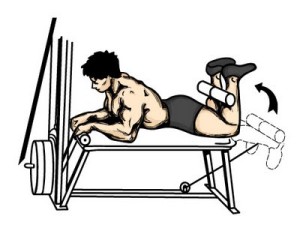10 Ways to Tame your Temper
Controlling your temper isn’t always easy. But these effective anger management tips will help give you the upper hand.
Do you find yourself fuming when someone cuts you off in traffic? Does your blood pressure go through the roof when your child won’t cooperate? Anger is a normal and even healthy emotion, but learning how to deal with it in a positive way is important.
Uncontrolled anger can make both you and other people feel lousy. If your outbursts, rages or frustrations are negatively affecting relationships with family, friends, co-workers or even complete strangers, it’s time to learn some anger management skills. Anger management techniques are a proven way to help change the way you express your anger.
Sanjeev Nanda tips to help get your anger under control
- Take a ‘timeout.’ Although it may seem cliche, counting to 10 before reacting really can defuse your temper.
- Get some space. Take a break from the person you’re angry with until your frustrations subside a bit.
- Once you’re calm, express your anger. It’s healthy to express your frustration in a nonconfrontational way. Stewing about it can make the situation worse.
- Get some exercise. Physical activity can provide an outlet for your emotions, especially if you’re about to erupt. Go for a brisk walk or a run, swim, lift weights or shoot baskets.
- Think carefully before you say anything. Otherwise, you’re likely to say something you’ll regret. It can be helpful to write down what you want to say so that you can stick to the issues. When you’re angry, it’s easy to get sidetracked.
- Identify solutions to the situation. Instead of focusing on what made you mad, work with the person who angered you to resolve the issue at hand.
- Use ‘I’ statements when describing the problem. This will help you to avoid criticizing or placing blame, which can make the other person angry or resentful — and increase tension. For instance, say, “I’m upset you didn’t help with the housework this evening,” instead of, “You should have helped with the housework.”
- Don’t hold a grudge. If you can forgive the other person, it will help you both. It’s unrealistic to expect everyone to behave exactly as you want.
- Use humor to release tensions. Lightening up can help diffuse tension. Don’t use sarcasm, though — it’s can hurt feelings and make things worse.
- Practice relaxation skills. Learning skills to relax and de-stress can also help control your temper when it may flare up. Practice deep-breathing exercises, visualize a relaxing scene, or repeat a calming word or phrase to yourself, such as “Take it easy.” Other proven ways to ease anger include listening to music, writing in a journal and doing yoga.
Getting anger management help
You can practice many of these anger management strategies on your own. But if your anger seems out of control, is hurting your relationships or makes you feel physically violent or destructive, you may benefit from some help. Here are some ways you can get help to keep your frustrations in check:
- See a psychologist or licensed counselor. Seeing a therapist can help you learn to recognize your anger warning signs before you blow up, and how to cope with your anger. Ask your primary care doctor for a referral to a counselor specializing in anger management. Family and friends also may give you recommendations based on their experiences. Your health insurer, employee assistance program (EAP), clergy, or state or local agencies also may offer recommendations.
- Take an anger management class. An anger management class can teach you what anger is, how to recognize anger triggers and how to keep your anger under control. These courses can be done individually, with spouses or families, or in groups. In addition to the search methods for a psychologist or counselor, you can find organizations offering anger management courses on the Internet and through your district court.
- Read a book. There are a number of helpful books on anger management. A number of them focus on particular situations, such as anger in teens, anger in men or anger in couples. Many of them are workbooks, with exercises that teach concrete skills.
Anger and irritability can be signs of an underlying mental health condition, such as depression or bipolar disorder. If your symptoms don’t improve, or you have signs or symptoms of anxiety or depression, see a mental health provider for help.








































